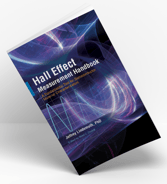 As part of the scientific community’s efforts to come up with better, less expensive, and easier-to-manufacture photovoltaic technology, much of the focus has been on developing perovskites as an alternative to silicon for solar cell commercialization. Among the challenges in doing this: improving photovoltaic efficiency and increasing its stability while conceiving of more eco-friendly types of perovskite absorber materials – more precisely, those that do not contain toxic lead (Pb). “As such, current and future materials are being studied to evaluate, reduce, mitigate, and potentially eliminate toxicity and environmental concerns.” 1
As part of the scientific community’s efforts to come up with better, less expensive, and easier-to-manufacture photovoltaic technology, much of the focus has been on developing perovskites as an alternative to silicon for solar cell commercialization. Among the challenges in doing this: improving photovoltaic efficiency and increasing its stability while conceiving of more eco-friendly types of perovskite absorber materials – more precisely, those that do not contain toxic lead (Pb). “As such, current and future materials are being studied to evaluate, reduce, mitigate, and potentially eliminate toxicity and environmental concerns.” 1
An APL Materials “Perspective” article from this month discusses these as well as other challenges associated with the development of lead-free halide perovskite absorbers, including how to best experimentally characterize the charge transport mechanisms of the often high-resistivity, low-mobility semiconductor structures. What caught our attention though was, when discussing the use of both DC and AC field Hall effect measurement methods for determining the mobility of the absorbers, the authors noted:
“… Hall effect characterization relying on a modulated (AC) magnetic field has been demonstrated to offer a viable route to the characterization of low mobility materials, down to a mobility range of 0.001 cm2 V−1 s−1. 103 Such an AC characterization has been successfully reported in a few instances in the recent literature on lead-free perovskites 37,38,101,102 and has the potential to become an attractive and widespread route to the charge transport characterization of lead-free perovskite absorbers.”
And for three of the published papers referenced in the quoted text above, measurements were accomplished using our Model 8404 HMS system equipped with the AC field Hall option. This system, developed in partnership with Toyo of Japan and introduced in 2011, utilizes a lock-in amplifier to separate the desired AC from the undesired DC voltages with a high degree of accuracy, enabling users to measure mobilities much lower than those measurable by the DC field technique. Also, for instances where higher resistance samples are being analyzed, it can be ordered with a high resistance option, extending resistance measurement capabilities up to 8 GΩ for AC measurements (as well as up to 200 GΩ for DC measurements).
If you also are doing perovskite research and would like to explore how our 8400 Series system might aid you in your work, please contact us: sales@lakeshore.com. If required, we’ll put you in contact with one of our application scientists to discuss your research needs.
 Also, be sure to download our Hall Measurement Handbook: A Fundamental Tool for Semiconductor Material Characterization, an 88-page book that’s a comprehensive resource for both new and experienced material researchers.
Also, be sure to download our Hall Measurement Handbook: A Fundamental Tool for Semiconductor Material Characterization, an 88-page book that’s a comprehensive resource for both new and experienced material researchers.
1 U.S. Department of Energy Office of Energy Efficiency & Renewable Energy

